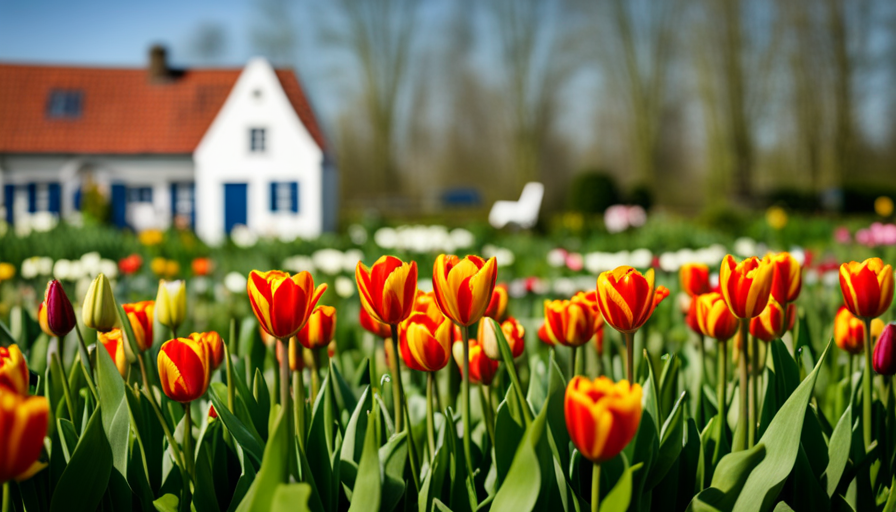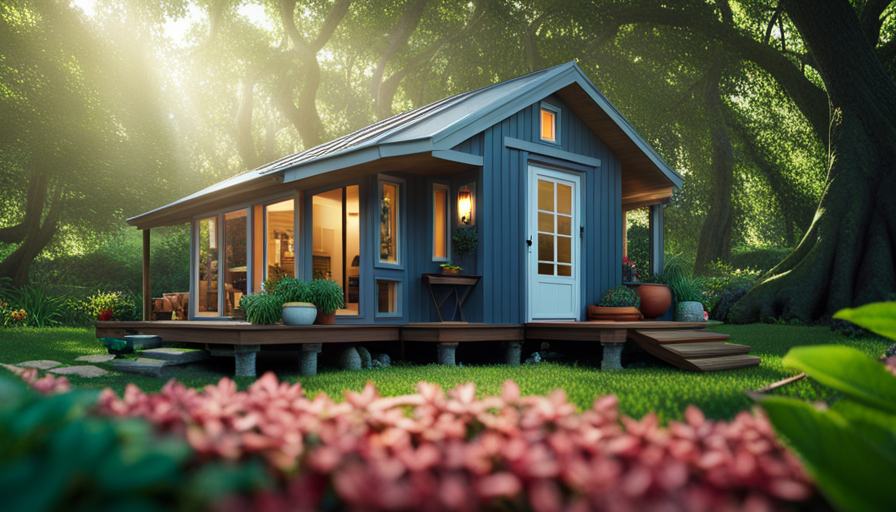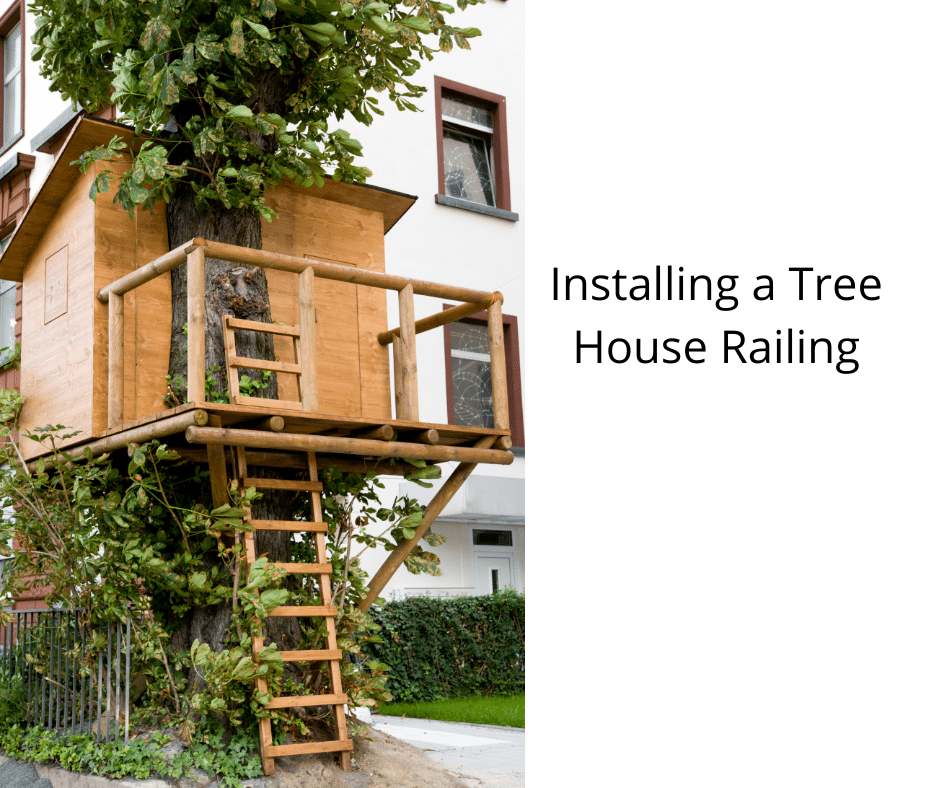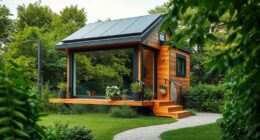Have you ever wondered what ‘tiny house’ is translated to in Dutch?
Imagine this: you’re strolling through the charming streets of Amsterdam, admiring the unique architecture and picturesque canals. Suddenly, you come across a quaint little dwelling that catches your eye. It’s a tiny house, perfectly nestled between two grand buildings. You can’t help but be intrigued by its simplicity and efficiency.
If you want to delve deeper into the Dutch culture and language, knowing how to say ‘tiny house’ is a great place to start.
In this article, we’ll explore the ins and outs of the Dutch language, uncover the concept of tiny houses, and provide you with the vocabulary and pronunciation tips you need to express this fascinating concept in Dutch.
Whether you’re planning a trip to the Netherlands or simply want to expand your linguistic horizons, learning how to say ‘tiny house’ in Dutch opens up a world of possibilities.
So, let’s dive in and embrace the Dutch language and the captivating world of tiny houses.
Key Takeaways
- Dutch language is essential for seamlessly integrating into the tiny house community in the Netherlands.
- Knowing Dutch helps navigate specific regulations for tiny houses in the Netherlands.
- Living in a tiny house promotes sustainability, financial freedom, and a closer connection to nature.
- Embracing the Dutch language and tiny house lifestyle allows for a more intentional and rewarding way of living.
Overview of the Dutch Language
To gain an understanding of the Dutch language, you should familiarize yourself with its unique characteristics and linguistic intricacies. Dutch, spoken by approximately 24 million people worldwide, is part of the West Germanic language family and has a fascinating history. It evolved from Old Frankish, which was spoken in the region during the Medieval period. Over time, Dutch developed its own distinct features, influenced by neighboring languages such as German and French.
When exploring the Dutch language, you’ll come across various common phrases and expressions that are worth knowing. For example, ‘Dank je wel’ is the Dutch way of saying ‘Thank you very much,’ while ‘Ik heb honger’ means ‘I’m hungry.’ Additionally, ‘Hoe gaat het?’ translates to ‘How are you?’ and is a common greeting.
Moving on to the next section about exploring the concept of tiny houses, it’s important to note that the Dutch language has a specific term for this architectural trend. Without further ado, let’s delve into the world of tiny houses and discover how the Dutch refer to them.
Exploring the Concept of Tiny Houses
Begin exploring the concept of compact dwellings by delving into the world of petite abodes. Tiny houses, as they’re commonly known, have gained immense popularity in recent years. These small, fully functional homes are typically around 400 square feet or less, offering a minimalist lifestyle that has captivated many.
Living in a tiny house has several benefits, such as reduced carbon footprint, lower maintenance costs, and increased mobility. To evoke emotion in the audience, let’s take a moment to envision the joys of tiny house living. Picture waking up to the sound of birds chirping outside your window, surrounded by nature. Imagine the cozy feeling of curling up with a book in a snug living room, the soft light from a small window casting a warm glow. Consider the freedom of being able to pack up and move your entire home, taking it wherever your heart desires.
The impact of tiny houses on the housing market cannot be overlooked. These compact dwellings provide an alternative solution to the growing demand for affordable housing. They allow individuals to own a home without the burden of a hefty mortgage, making homeownership more accessible to a wider range of people.
Understanding Dutch vocabulary for housing is the next step in your exploration.
Understanding Dutch Vocabulary for Housing
Imagine yourself immersing in the Dutch housing landscape, where you’ll encounter an array of unique vocabulary that will help you navigate the diverse housing options available. When it comes to Dutch vocabulary for home design and architecture, there are some interesting differences between Dutch and English housing terms. To give you a better understanding, here is a table highlighting a few key terms:
| Dutch Term | English Translation | Definition |
|---|---|---|
| Woning | House | A standalone dwelling |
| Appartement | Apartment | A unit within a larger building |
| Grachtenpand | Canal house | A narrow house located alongside a canal |
| Herenhuis | Townhouse | A grand, often historical, urban residence |
| Boerderij | Farmhouse | A rural dwelling typically found in the countryside |
As you can see, Dutch housing terms often have specific meanings that are unique to their cultural context. Now that you have a better understanding of Dutch vocabulary for housing, let’s dive into some pronunciation tips for these words in the next section.
Pronunciation Tips for Dutch Words
When it comes to pronouncing Dutch words, it’s like unlocking a musical melody with each unique sound. The Dutch language has its own distinct pronunciation techniques that can be fascinating to explore.
To fully grasp the meaning of Dutch housing terms, it’s important to understand how to pronounce them correctly. Here are some tips to help you with Dutch pronunciation:
-
Pay attention to vowel sounds: Dutch vowels can be pronounced differently compared to English. For example, the ‘a’ in Dutch is pronounced like the ‘a’ in ‘father’.
-
Emphasize the consonants: Dutch consonants are often pronounced more forcefully than in English. For instance, the ‘g’ sound can be challenging for non-native speakers, as it is pronounced in the back of the throat.
-
Listen to native speakers: One of the best ways to improve your Dutch pronunciation is by listening to and imitating native speakers. This will help you develop an ear for the language’s unique sounds.
By exploring Dutch pronunciation techniques, you can better understand the meaning of Dutch housing terms.
Now, let’s dive into how to use the phrase ‘tiny house’ in Dutch sentences.
How to Use the Phrase ‘Tiny House’ in Dutch Sentences
To truly capture the essence of compact living in the Netherlands, you must master the art of incorporating the phrase ‘a cozy abode’ into your Dutch conversations. Learning the Dutch language is essential for seamlessly integrating into the tiny house community and fully embracing the benefits of this unique lifestyle.
When it comes to learning Dutch, there are various resources available to help you. Online platforms like Duolingo and Babbel offer interactive lessons and exercises to improve your language skills. Additionally, language exchange programs and conversation groups provide opportunities to practice speaking with native Dutch speakers.
Living in a tiny house in the Netherlands offers numerous advantages. Not only does it promote a more sustainable and eco-friendly lifestyle, but it also allows for financial freedom and a closer connection to nature. With a smaller living space, you can simplify your life, reduce clutter, and focus on what truly matters.
Here is a table illustrating the benefits of living in a tiny house in the Netherlands:
| Benefits |
|---|
| Sustainability |
| Financial freedom |
| Closer to nature |
| Simplified lifestyle |
| Reduced clutter |
By incorporating the phrase ‘a cozy abode’ into your Dutch conversations, you can effectively communicate your passion for tiny house living. In the next section, we will explore common phrases and expressions related to tiny houses, further enriching your Dutch language skills.
Common Phrases and Expressions Related to Tiny Houses
If you truly want to immerse yourself in the world of compact living in the Netherlands, mastering the language is crucial. This will allow you to effortlessly incorporate phrases and expressions related to the unique lifestyle of cozy abodes.
When it comes to tiny houses, there are some phrases and expressions that can help you navigate conversations and understand the nuances of this alternative way of living. In the Dutch language, there are several common phrases and expressions related to tiny houses. Here are two sub-lists to help you visualize the Dutch culture surrounding these homes:
-
Differences between tiny houses and traditional houses:
-
‘Klein maar fijn’ – This phrase translates to ‘small but nice,’ capturing the essence of tiny houses and highlighting the belief that less is more.
-
‘Duurzaam wonen’ – Meaning ‘sustainable living,’ this phrase emphasizes the eco-friendly aspect of tiny houses, which often use renewable energy sources and have a smaller environmental footprint.
-
Benefits of living in a tiny house community:
-
‘Gemeenschapsgevoel’ – This term refers to a sense of community and togetherness, which is one of the key advantages of living in a tiny house community.
-
‘Minimalistisch leven’ – Translating to ‘minimalistic living,’ this phrase emphasizes the simplicity and freedom associated with a minimalist lifestyle.
Understanding these phrases and expressions will enable you to engage in meaningful conversations about tiny houses in Dutch. Dutch culture and attitudes towards tiny houses are deeply rooted in sustainability, community, and simplicity, which we will explore further in the next section.
Dutch Culture and Attitudes Towards Tiny Houses
Immerse yourself in the rich Dutch culture and experience the profound attitudes towards compact living in the Netherlands. Dutch culture has long embraced the idea of living in smaller spaces, and this is reflected in their housing regulations for tiny houses.
The Dutch government has recognized the benefits of tiny houses, such as their affordability and sustainability, and has implemented regulations to accommodate them. These regulations often allow for more flexible land use and zoning laws, making it easier for people to live in tiny houses.
The impact of tiny houses on Dutch urban planning has been significant. With the increasing popularity of these small dwellings, urban planners are rethinking traditional housing models. Tiny houses offer an innovative solution to the housing crisis in urban areas, allowing for more efficient use of space and resources. They also promote a sense of community and encourage sustainable living practices.
If you want to learn more about Dutch culture and vocabulary related to tiny houses, there are many resources available. Online language courses, books, and language exchange programs can help you expand your vocabulary and deepen your understanding of Dutch culture. So, immerse yourself in the rich Dutch culture and discover the fascinating world of tiny houses in the Netherlands.
Resources for Learning More Dutch Vocabulary
In order to fully immerse yourself in the Dutch language and culture, it’s important to expand your vocabulary beyond just knowing how to say ‘tiny house’ in Dutch. Luckily, there are plenty of resources available to help you learn more Dutch vocabulary and improve your language fluency.
When it comes to learning Dutch grammar, one valuable resource is online language courses. Platforms like Duolingo and Babbel offer comprehensive lessons and exercises specifically designed to help learners grasp the intricacies of Dutch grammar. Additionally, websites such as Learndutch.org provide free grammar lessons and interactive exercises that cater to different proficiency levels.
To further enhance your language fluency, it’s crucial to practice speaking Dutch regularly. One effective way to do this is by finding a language exchange partner, either in person or through online platforms like Tandem or HelloTalk. Engaging in conversation with native Dutch speakers will not only improve your pronunciation and listening skills, but also expose you to colloquial phrases and expressions.
By utilizing these resources and incorporating regular practice into your language learning routine, you’ll be well on your way to becoming proficient in Dutch. Now, let’s explore the practical uses for knowing how to say ‘tiny house’ in Dutch.
Practical Uses for Knowing How to Say ‘Tiny House’ in Dutch
Explore the practicality of understanding how to express yourself in the language of tulips and windmills, and you’ll discover a world of opportunities to connect with Dutch locals and navigate the charming villages of the Netherlands.
To delve into the practical uses of knowing how to say ‘tiny house’ in Dutch, consider the following:
-
Local Interaction: By speaking the local language, you can engage in meaningful conversations with Dutch locals who are passionate about the tiny house movement. This can lead to valuable connections and insights into the common challenges of living in a tiny house in the Netherlands.
-
Cultural Understanding: Incorporating Dutch design elements into your tiny house can enhance its functionality and aesthetic appeal. Understanding the language allows you to research, communicate, and implement these design principles effectively. You’ll appreciate the benefits of incorporating Dutch design in tiny houses, such as maximizing space utilization and integrating sustainable features.
-
Community Engagement: The Netherlands is known for its strong sense of community. Speaking Dutch enables you to actively participate in local events, workshops, and gatherings centered around the tiny house lifestyle. By connecting with like-minded individuals, you can share experiences, learn from others, and contribute to the growing tiny house community.
-
Navigating Regulations: The Dutch government has specific regulations for tiny houses. Being able to communicate in Dutch empowers you to navigate these regulations more effectively, ensuring compliance and a smoother transition into the tiny house lifestyle in the Netherlands.
Embracing the Dutch language and the tiny house lifestyle go hand in hand. By understanding how to say ‘tiny house’ in Dutch, you open yourself up to a wealth of opportunities for connection, cultural understanding, community engagement, and navigating regulations.
Conclusion: Embrace the Dutch Language and Tiny House Lifestyle
By understanding how to communicate effectively in Dutch, you can fully embrace the rich culture and unique lifestyle of the Netherlands. Exploring the benefits of living in a tiny house and understanding the Dutch perspective on minimalism will further enhance your experience.
Living in a tiny house offers numerous advantages, such as reduced expenses and environmental impact. The Dutch have long embraced the concept of minimalism, valuing quality over quantity and focusing on experiences rather than material possessions. This mindset aligns perfectly with the tiny house lifestyle, where simplicity and sustainability are key.
To help you better understand the Dutch perspective on minimalism and the benefits of living in a tiny house, here is a table showcasing some key points:
| Dutch Perspective on Minimalism | Benefits of Living in a Tiny House |
|---|---|
| Emphasizes quality over quantity | Reduces expenses and environmental impact |
| Focuses on experiences rather than material possessions | Promotes a simpler and more sustainable lifestyle |
| Values functionality and practicality | Encourages creativity and resourcefulness |
By embracing the Dutch language and the tiny house lifestyle, you can fully immerse yourself in the culture and enjoy the freedom and fulfillment that comes with living with less. So go ahead, learn how to say "tiny house" in Dutch and start your journey towards a more intentional and rewarding way of living.
Frequently Asked Questions
What is the history of tiny houses in the Netherlands?
The history of tiny houses in the Netherlands is closely tied to their impact on sustainability. These small, eco-friendly dwellings have gained popularity due to their minimal carbon footprint and reduced energy consumption.
Additionally, economic factors have played a role in their growth. The rising cost of housing and the desire for affordable living options have driven the demand for tiny houses. As a result, these compact homes have become a viable solution for sustainable and affordable living in the Netherlands.
What are some alternative terms for ‘tiny house’ in Dutch?
Looking for alternative terms for ‘tiny house’ in Dutch? Well, let me enlighten you with some precise knowledge.
In the Dutch language, ‘small dwelling’ can be referred to as ‘kleine woning’ or ‘klein huis’. But wait, there’s more! Synonyms for ‘tiny home’ include ‘minihuis’, ‘klein huisje’, and ‘compacte woning’.
These words perfectly capture the essence of the cozy and compact living spaces that have become increasingly popular in recent years.
Are there any specific building regulations for tiny houses in the Netherlands?
Building regulations for tiny houses in the Netherlands are strict and detailed. They cover aspects such as size limitations, safety requirements, and connection to utilities.
The pros of living in a tiny house include reduced expenses, a smaller ecological footprint, and the freedom to move around. However, there are cons to consider as well, such as limited space and the challenge of finding suitable land.
It’s important to research and comply with all regulations before embarking on building a tiny house in the Netherlands.
How popular are tiny houses in the Netherlands?
Tiny houses are gaining popularity in the Netherlands, with a significant economic impact and environmental benefits.
One interesting statistic reveals that the tiny house movement contributes around €7.6 million to the Dutch economy each year.
This thriving trend not only stimulates local businesses but also reduces the ecological footprint.
Living in a tiny house promotes sustainable practices like energy conservation and minimal waste production.
The Netherlands recognizes the value of tiny houses and encourages their growth for a greener and more efficient future.
Are there any Dutch communities or groups dedicated to living in tiny houses?
Dutch tiny house communities are thriving in the Netherlands, offering a unique and sustainable way of living. Living in a tiny house provides numerous benefits such as reduced environmental impact, financial freedom, and a simpler lifestyle.
These communities are dedicated to promoting a sense of community, sharing resources, and living in harmony with nature. They organize events, workshops, and provide support for individuals interested in embracing the tiny house movement.
Conclusion
Congratulations on learning how to say ‘tiny house’ in Dutch! By embracing the Dutch language, you’ve opened the door to a whole new world of communication and understanding.
Just like a tiny house, your knowledge of Dutch may seem small, but it holds immense value and potential. Whether you’re exploring the vibrant streets of Amsterdam or delving into Dutch culture, knowing how to say ‘tiny house’ will undoubtedly enhance your experience.
So, don’t be afraid to immerse yourself in the language and embrace the cozy, compact world of tiny houses in Dutch.
Hi, I’m Emma. I’m the Editor in Chief of Tiny House 43, a blog all about tiny houses. While tree houses are often associated with childhood, they can be the perfect adult retreat. They offer a cozy space to relax and unwind, surrounded by nature. And since they’re typically built on stilts or raised platforms, they offer stunning views that traditional homes simply can’t match. If you’re looking for a unique and romantic getaway, a tree house tiny house might just be the perfect option.










